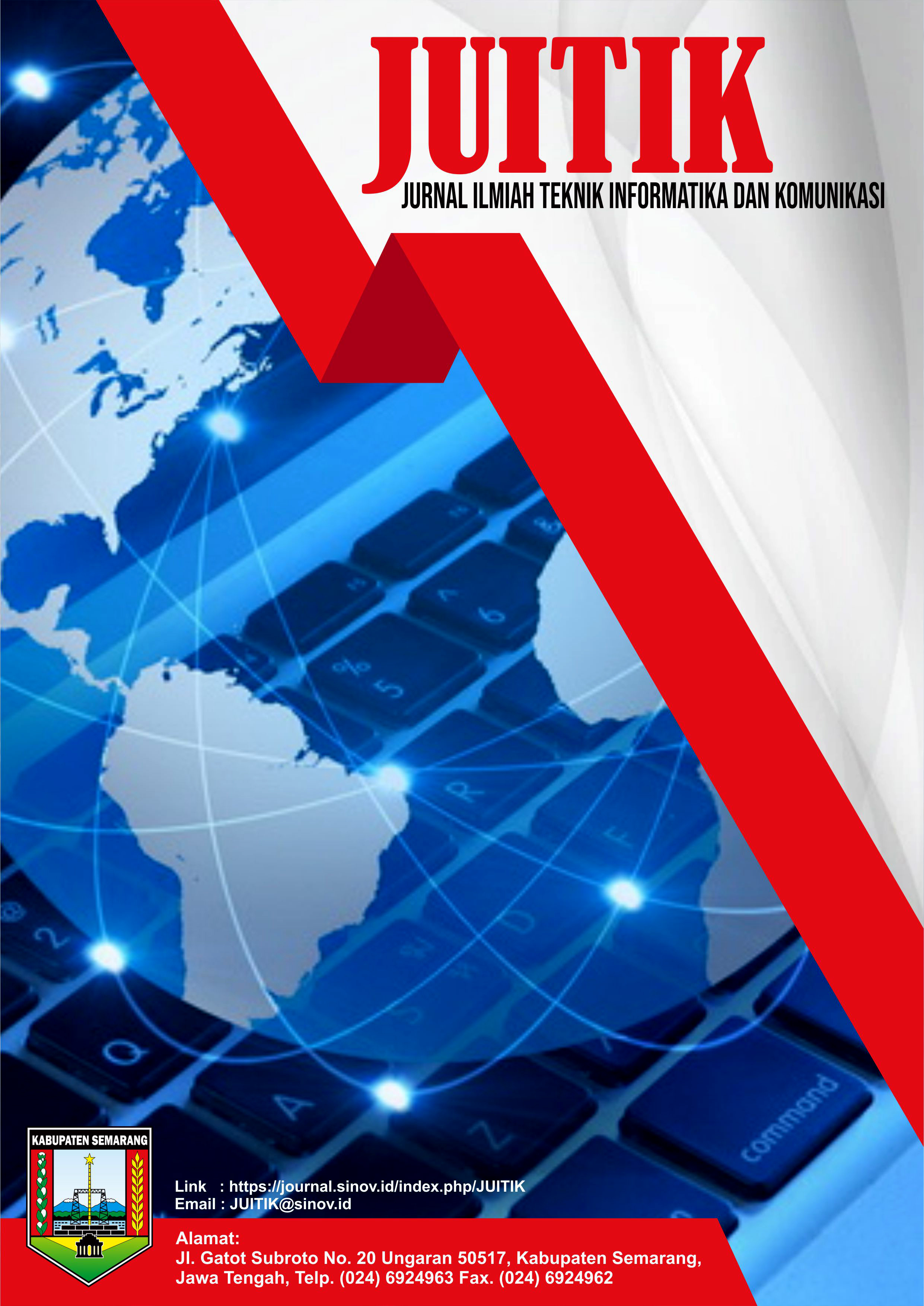Keterbukaan Diri dan Pembentukan Keakraban Generasi Z dalam Komunitas Thrifting Tabanan: Perspektif Teori Penetrasi Sosial
DOI:
https://doi.org/10.55606/juitik.v5i3.1704Keywords:
Generation Z, Interpersonal Communication, Self-Disclosure, Social Penetration Theory, Thrifting CommunityAbstract
This study aims to analyze the process of self-disclosure and the formation of intimacy among Generation Z members in the thrifting community in Tabanan through the perspective of Social Penetration Theory. Generation Z, who grew up in the digital era, is known for open, expressive, and adaptive interpersonal communication styles within new social environments. The thrifting community, which focuses on buying and selling secondhand items and sharing interests in sustainable lifestyles, provides a social space that facilitates meaningful interactions among members. This research employs a qualitative approach using in-depth interviews with several active members of the community. The findings reveal that self-disclosure serves as the main foundation for building closeness and mutual trust among members. The process of social penetration occurs gradually, starting from light conversations about shared interests to more personal and emotional discussions. The intimacy developed strengthens solidarity, a sense of togetherness, and group identity. In addition to serving as a communication tool, self-disclosure also functions as a mechanism for fostering empathy and mutual understanding among members. These findings indicate that Social Penetration Theory is relevant in explaining the interpersonal communication dynamics of Generation Z in thrifting communities, where social relationships grow through openness, trust, and intimacy.
References
Al Azis, M. R., & Irwansyah, I. (2021). Fenomena self-disclosure dalam penggunaan platform media sosial. Jurnal Teknologi dan Sistem Informasi Bisnis, 3(1), 120–130. https://doi.org/10.47233/jteksis.v3i1.189
Alindri, T., Zaphira, K. A., Pitaloka, B. P. D., & Panorama, M. (2025). Pengaruh media sosial terhadap perilaku konsumsi Gen Z di Palembang dalam membeli produk thrift. Balance: Media Informasi Akuntansi dan Keuangan, 17(2), 81–87. https://doi.org/10.1234/blnc.v17i2.81
Aristi, D., & Wahdiniwaty, D. (2023). Peran kelompok referensi dalam perilaku thrifting: Analisis deskriptif pada Generasi Z. Jurnal Ilmu Komunikasi, 10(1), 45–58. https://doi.org/10.1234/jik.v10i1.45
Dewi, A. P., & Delliana, S. (2020). Fenomena self-disclosure dalam penggunaan second Instagram account. Jurnal Ilmu Komunikasi, 3(1), 169–180. https://doi.org/10.1234/jik.v3i1.169
Dewi, A. P., & Delliana, S. (2020). Self-disclosure Generasi Z di Twitter. Ekspresi dan Persepsi: Jurnal Ilmu Komunikasi, 3(1), 62–69. https://doi.org/10.33822/jep.v3i1.1526
Fairus, N. (2025). Strategi pengembangan usaha thrifting menggunakan pendekatan bisnis model canvas. Mamen: Jurnal Manajemen dan Bisnis, 7(2), 123–135. https://doi.org/10.1234/mamen.v7i2.123
Hamzah, R. E., & Putri, C. E. (2020). Analisis self-disclosure pada fenomena hyperhonest di media sosial. Jurnal Pustaka Komunikasi, 3(2), 151–160. https://doi.org/10.1234/jpk.v3i2.151
Handoko, V. R. P. (2025). Self-disclosure generasi Z melalui media sosial X (Twitter). Jurnal Ilmu Komunikasi UHO: Jurnal Penelitian Kajian Ilmu Komunikasi dan Informasi, 10(2), 397–411. https://doi.org/10.1234/jik.v10i2.397
Kristanti, S. A., & Eva, N. (2022). Self-esteem dan self-disclosure generasi Z pengguna Instagram. Jurnal Penelitian Psikologi, 13(1), 10–20. https://doi.org/10.29080/jpp.v13i1.697
Kumalasari, D., & Zis, A. (2024). Pengaruh penggunaan serta keakraban teknologi digital terhadap perilaku komunikasi generasi Z. Jurnal Kompleksitas, 6(1), 45–56. https://doi.org/10.1234/jk.v6i1.45
Lase, C. C. (2024). Eksplorasi dampak harga diri terhadap self-disclosure online pada generasi Z. Behavioral and Cognitive Psychology, 12(3), 123–134. https://doi.org/10.1234/bcp.v12i3.123
Ningsih, R. (2024). Realitas kesantunan berbahasa Gen-Z di era digital. Onoma: Jurnal Ilmu Bahasa, 5(1), 45–59. https://doi.org/10.1234/onoma.v5i1.45
Putra, Y. S. (2016). Theoritical review: Teori perbedaan generasi. Among Makarti, 9(18), 123–134. https://doi.org/10.52353/ama.v9i2.142
Ramadhani, A. T., Zaphira, K. A., Pitaloka, B. P. D., & Panorama, M. (2025). Pengaruh media sosial terhadap perilaku konsumsi Gen Z di Palembang dalam membeli produk thrift. Balance: Media Informasi Akuntansi dan Keuangan, 17(2), 81–87. https://doi.org/10.1234/blnc.v17i2.81
Sari, W. P., & Irena, L. (2020). Gambaran self-disclosure generasi Z pengguna berat media sosial. Komunika, 8(1), 1–14. https://doi.org/10.1234/komunika.v8i1.1
Sutanto, V., Setyowati, I., Rizka, & Hanifah. (2025). Thrifting sebagai representasi gaya hidup generasi Z: Perspektif interaksi simbolik. Jurnal Ilmu Komunikasi, 8(1), 1–14. https://doi.org/10.35760/mkm.2025.v9i1.15067
Todorov, A. (2023). Gen Z beradopsi terhadap teknologi. Jurnal Teknologi dan Inovasi, 5(2), 45–56. https://doi.org/10.57122/integral.v2i1.6
Wijayati, D., & Wahdiniwaty, D. (2020). Peran kelompok referensi dalam perilaku thrifting: Analisis deskriptif pada generasi Z. Jurnal Ilmu Komunikasi, 10(1), 45–58. https://doi.org/10.1234/jik.v10i1.45
Wulandari, D., & Fadila, F. (2022). Peran Gen Z dalam mengubah tren konsumsi dan pemasaran digital. Jurnal Ekonomi dan Bisnis, 20(1), 11–23. https://doi.org/10.1234/jeb.v20i1.11
Zhang, Y., Hamdy, M., & Todorov, A. (2017). Konsumen generasi Y termotivasi oleh keakraban networking. Jurnal Pemasaran dan Inovasi, 8(1), 23–34. https://doi.org/10.1234/jpi.v8i1.23
Downloads
Published
How to Cite
Issue
Section
License
Copyright (c) 2025 Jurnal Ilmiah Teknik Informatika dan Komunikasi

This work is licensed under a Creative Commons Attribution-ShareAlike 4.0 International License.













